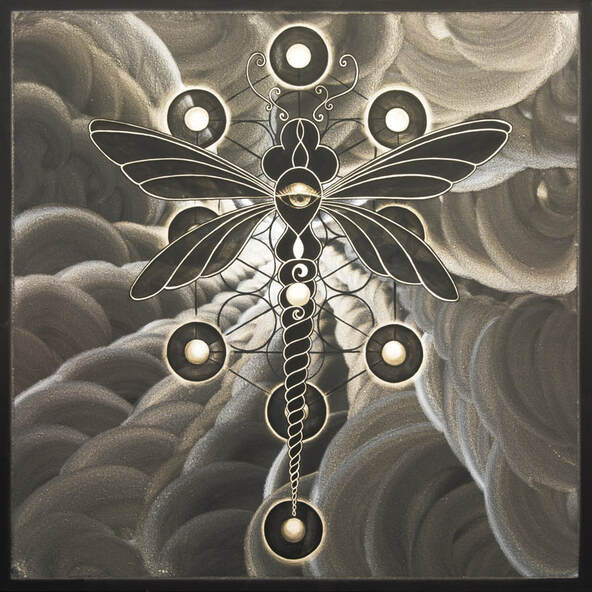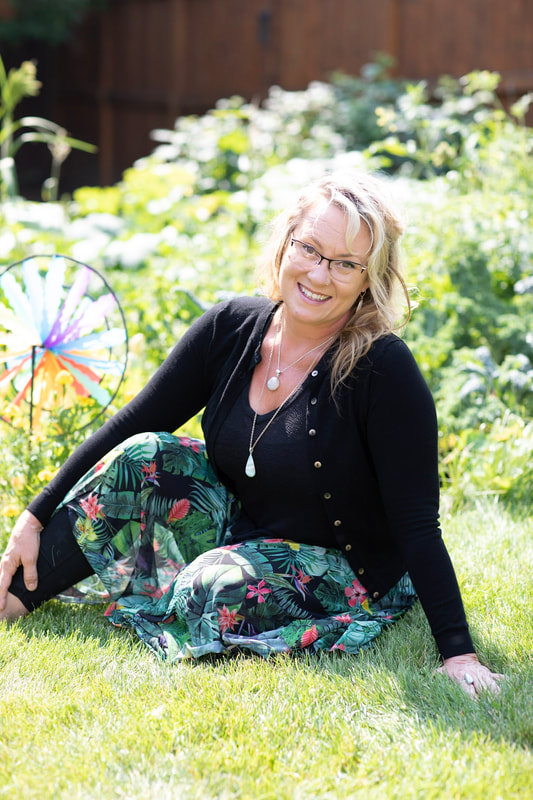|
Sacred geometry is a field of study that explores the inherent patterns, shapes, and mathematical principles found in the natural world, religious and spiritual symbolism, and ancient architectural and artistic traditions. It is based on the belief that certain geometric forms hold deep spiritual or metaphysical significance and can be seen as a reflection of divine order and universal truths.
Combining sacred geometry, divine intelligence, somatic therapy, art therapy, and psychedelics can be a powerful and transformative experience. We are all geometrical beings with infinite possibilities of how our life can be created, explored and enjoyed. When we are able to tap into and access the power of sacred geometry, we feel more balanced in our lives because we become more connected to the nature around us as well as our own infinite possibilities!
0 Comments
by Charmaine Husum
The Integration of Psychedelic experiences using Somatic Art Therapy can be a valuable and supportive approach to Shadow Work. What is Shadow Work? Shadow work is a psychological and spiritual practice that involves exploring and integrating the unconscious aspects of the self, often referred to as the “shadow.” The concept of the shadow was popularized by Swiss psychologist Carl Jung, who believed that the shadow consists of repressed or disowned aspects of our personality, including our fears, insecurities, unresolved traumas, and unexpressed desires. Somatic Art Therapy & Shadow Work Here’s how Somatic Art Therapy can facilitate the integration of psychedelic experiences and support Shadow Work: Are you struggling to make sense of the Psychedelic Experience you just went through? Do you feel like the surface has just been skimmed and you would like to go deeper into learning about yourself and how to live your best life ever?
The effects of a mystical and altered state of consciousness linger, bounce around, and affect our waking reality far beyond ceremony or however your awakening has been opened. When our soul’s path has been awakened through sacred plant medicines or entheogens like Ayahuasca, Psilocybin, Iboga, Kambo, LSD, or through a Kundalini Awakening, Dark Night of the Soul or Meditation and Yoga, a profound shift happens in the body and brain. This can be confusing once we go back to our regular waking life. Neuroplasticity: How the Brain is AffectedMystical Experiences are profound experiences for anybody, that is true, but what is actually happening in the brain to create this profound shift? Although research is just now flooding in, there have been many studies, FMRI's and personal, professional and medical accounts to explain what shifts our brain is going through in these profoundly moving moments.
Intensely powerful is the rerouting of neuropathways which dictate the ways we have habitually been conditioned to act, react and survive in our lives. That is why profound, mystical experiences can bring about such great changes when it comes to addiction and changing demoting habits or personality traits that may have taken control of our lives. How to Rewire Your Attachment Style
Ten Effective ways to Support Growth and Change When discussing ways to reparent ourselves to move into Secure Attachment, what is important is to be able to acknowledge when you are feeling triggered and have compassion for where this trigger was first formed. Knowing yourself, building self-esteem, and finding self-compassion are steps in the right direction to achieving a Secure Attachment style but it is a process. Have compassion for your journey of rewiring and learning, just as you would a small child. Here are some key steps in moving toward the direction of having a secure attachment pattern in your life. The Default mode network (DMN) is a set of interacting brain structures first described in 2001 by the Washington University neuroscientist Marcus Raichle. It’s called that because it is most active when the brain is in a resting state. This network links parts of the cerebral cortex (thinking, decision making, higher brain functions) with deeper and evolutionarily older structures of the brain involved in emotion and memory.
It is said to influence and often inhibit, other parts of the brain, especially those involving emotion and memory, preventing signals from being interrupted or interfering with each other. Neuroimaging studies suggest that the DMN is involved in higher-order “metacognitive” activities such as self-reflection, mental projection, time travel, and the ability to attribute mental states to others (Sheline et al. 2009). The breath is a powerful source of transformation. The rate and rhythm of the breath are intimately connected to our mental & emotional states (Brown, Gerbarg, 2012). Just as the emotions and the mind cause the breath to vary, by consciously controlling the breath, we gain control over our mind and our emotions (Trinity College Dublin. 2018).
In my Art Therapy practice, one of the first things I pay attention to when I first see a client is how they are breathing. Noticing the breath says a lot about how a person is feeling in the moment. Notice how you are breathing right now. Is your breath shallow and regulated to the upper chest? Or is it deep and concentrated in the belly? How do you feel in this moment? One way to stabilize one’s self when feeling a sense of anxiety or stress (where the breath becomes shallow and centralized in the upper chest) is to stop and focus your attention on the breath filling the lower belly with deep inhales through the nose (Bhajan, 2010). Combining this modality of breath-work with the eye gaze by noticing ten things in the room and mentally or aloud saying their colour and what they are, as well as pressing the feet into the floor, will activate your parasympathetic nervous system and bring you into a feeling of calmness (Brantley & el 2007). Both Art Therapy and Kundalini Yoga share the powerful healing effect of integrating the left and right hemispheres of the brain. Typically the left side of the brain rules the orderly, statistical, mathematical, logical, practical, rational way of thinking, seeing things in straight lines. The right side of the brain represents passion, experience of taste and feelings, creativity, free spirit, imagination, yearning, sensuality, movement, vivid colours and the senses.
Without activities that stimulate integration within each side of the brain, it is difficult for one side to make sense of how the other sees things. You cannot put feelings and expressions into boxes as the left hemisphere would require, they will become restricted; they must be felt to truly be experienced. Subsequently, the right brain also has difficulty making sense of how the left-brain sees things. As a society, we tend to be mostly left brain dominant and this causes an imbalance that can create a great disruption in the natural flow of everyday living. This is why it is so important to create integration and balance within both sides of the brain. |
AuthorCharmaine Husum runs a private Art Therapy practice online and in Calgary Alberta. She is also an Artist, Kundalini Yoga teacher and trained in the somatic approach of Integrative Body Psychotherapy, Reiki and Mystical Integration. Her current research enthusiasms are in neuroplasticity, neuroscience, epigenetics, mystical integration and intergenerational trauma; on which she is currently writing a book and creating online courses. She specializes in working with trauma and symptoms of PTSD and C-PTSD as well as Autism, Depression, Anxiety, Eating Disorders, Addiction and other mental health symptoms. Archives
July 2023
Categories
All
|
"Sometimes the smallest step in the right direction
ends up being the biggest step of your life.
Tip toe if you must but take the step".
- Naeem Callaway
© 2022-24 Centre of the HeArt
Website Design By: IA Creative
Website Design By: IA Creative




 RSS Feed
RSS Feed



